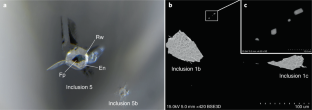宇宙物理学者は、地球上で検出されたガンマ線バーストが、宇宙がまだ8億8000万歳だったころに起こった爆発に由来することを発見しました。 Astrophysicists have discovered that a gamma-ray burst detected on earth came from an explosion that occurred when the Universe was only 880 million years old.
2022-09-26 バース大学
この発見から数ヵ月後、国際的な天文学者チームが爆発の余韻を観測し、爆発の引き金となった出来事についてさらに詳しく調べた。
研究者らは、今回の発光の原因となったGRBは、これまで検出された中で最も遠方で高エネルギーであると結論づけた。
GRB210905Aという古い現象であるにもかかわらず、X線の波長などの性質が、より最近、より地球に近い場所で起きた宇宙爆発によるGRBと非常によく似ていることも発見された。
この発見は、大質量の星が宇宙の早い時期に形成され、進化していることを新たに理解し、確認するものである。
今回観測されたGRBは「長い」タイプのもので、大質量星が破局的に崩壊して生じたブラックホールから発生したものである。
<関連情報>
- https://www.bath.ac.uk/announcements/deep-space-massive-light-burst-detected-on-earth-came-from-infant-universe/
- https://www.aanda.org/articles/aa/full_html/2022/09/aa43225-22/aa43225-22.html
幼い宇宙からの爆発:超高速GRB 210905A A blast from the infant Universe: The very high-z GRB 210905A
A. Rossi, D. D. Frederiks, D. A. Kann, M. De Pasquale, E. Pian, G. Lamb, P. D’Avanzo, L. Izzo, A. J. Levan, D. B. Malesani, A. Melandri, A. Nicuesa Guelbenzu, S. Schulze, R. Strausbaugh, N. R. Tanvir, L. Amati, S. Campana, A. Cucchiara, G. Ghirlanda, M. Della Valle, S. Klose, R. Salvaterra, R. L. C. Starling, G. Stratta, A. E. Tsvetkova, S. D. Vergani, A. D’Aì, D. Burgarella, S. Covino, V. D’Elia, A. de Ugarte Postigo, H. Fausey, J. P. U. Fynbo, F. Frontera, C. Guidorzi, K. E. Heintz, N. Masetti, E. Maiorano, C. G. Mundell, S. R. Oates, M. J. Page, E. Palazzi, J. Palmerio, G. Pugliese, A. Rau, A. Saccardi, B. Sbarufatti, D. S. Svinkin, G. Tagliaferri, A. J. van der Horst, D. J. Watson, M. V. Ulanov, K. Wiersema, D. Xu and J. Zhang
Astronomy & Astrophysics Published:21 September 2022
DOI:https://doi.org/10.1051/0004-6361/202243225

Abstract
We present a detailed follow-up of the very energetic GRB 210905A at a high redshift of z = 6.312 and its luminous X-ray and optical afterglow. Following the detection by Swift and Konus-Wind, we obtained a photometric and spectroscopic follow-up in the optical and near-infrared (NIR), covering both the prompt and afterglow emission from a few minutes up to 20 Ms after burst. With an isotropic gamma-ray energy release of Eiso = 1.27−0.19+0.20 × 1054 erg, GRB 210905A lies in the top ∼7% of gamma-ray bursts (GRBs) in the Konus-Wind catalogue in terms of energy released. Its afterglow is among the most luminous ever observed, and, in particular, it is one of the most luminous in the optical at t ≳ 0.5 d in the rest frame. The afterglow starts with a shallow evolution that can be explained by energy injection, and it is followed by a steeper decay, while the spectral energy distribution is in agreement with slow cooling in a constant-density environment within the standard fireball theory. A jet break at ∼46.2 ± 16.3 d (6.3 ± 2.2 d rest-frame) has been observed in the X-ray light curve; however, it is hidden in the H band due to a constant contribution from the host galaxy and potentially from a foreground intervening galaxy. In particular, the host galaxy is only the fourth GRB host at z > 6 known to date. By assuming a number density n = 1 cm−3 and an efficiency η = 0.2, we derived a half-opening angle of 8.4 ° ±1.0°, which is the highest ever measured for a z ≳ 6 burst, but within the range covered by closer events. The resulting collimation-corrected gamma-ray energy release of ≃1 × 1052 erg is also among the highest ever measured. The moderately large half-opening angle argues against recent claims of an inverse dependence of the half-opening angle on the redshift. The total jet energy is likely too large to be sustained by a standard magnetar, and it suggests that the central engine of this burst was a newly formed black hole. Despite the outstanding energetics and luminosity of both GRB 210905A and its afterglow, we demonstrate that they are consistent within 2σ with those of less distant bursts, indicating that the powering mechanisms and progenitors do not evolve significantly with redshift.



